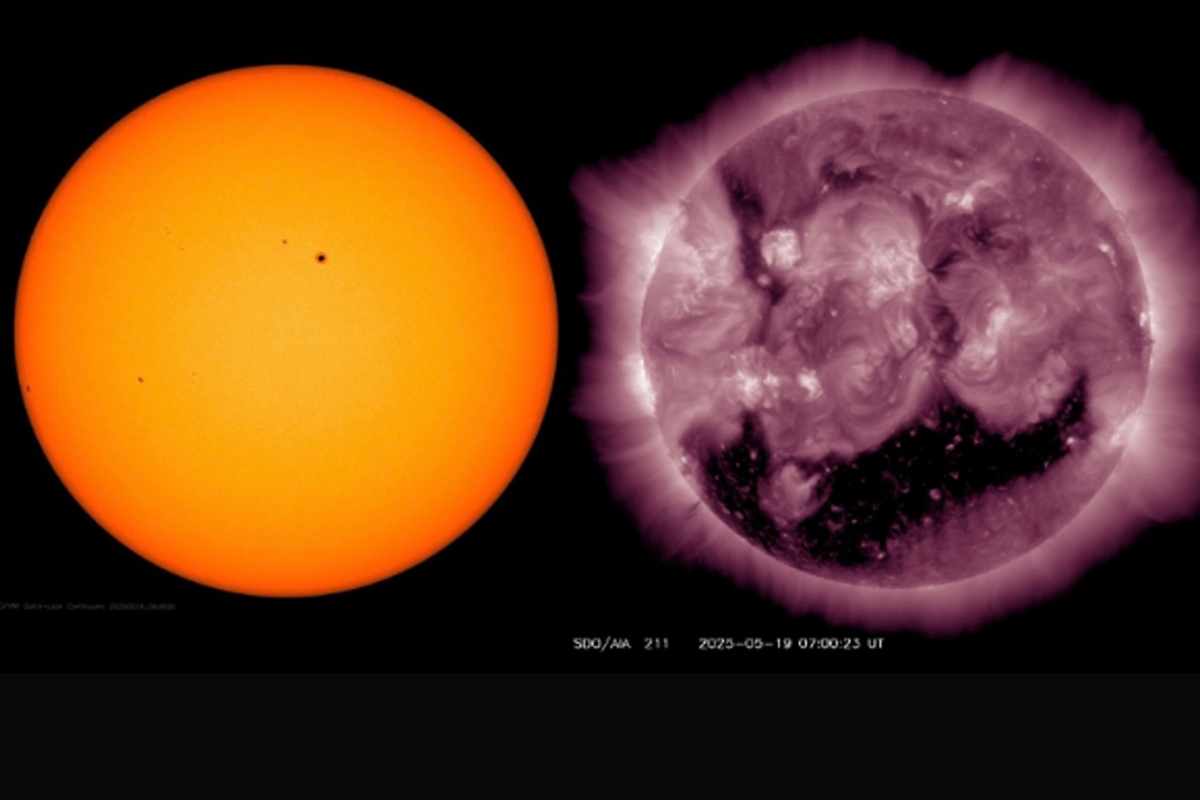The Sun Turned a Hole to Us: A Physicist from MIPT Explained What This Means

Phystech explained what threatens us from the coronal hole that “looks” directly at the Earth
For several days now, including May 19, a large coronal hole has been visible on the Sun. How does this affect the Earth, and what is the nature of this phenomenon? We asked Elena Nokhrina, a leading researcher and head of the Laboratory of Fundamental and Applied Research of Relativistic Objects of the Universe at MIPT, to tell us about this.

test banner under the title image
Coronal holes are not holes in the literal sense of the word, but darker areas on the visible surface of the Sun that are visible in ultraviolet and X-ray images. These are places where magnetic field lines are broken, from where high-speed solar wind is freely released into space.
According to Nokhrina, during the period when the hole is facing Earth, as it did on May 19, more solar wind flies towards us, which can cause lower and brighter auroras and magnetic storms in the coming days.
– However, much more powerful storms are provoked by coronal mass ejections that occur during solar flares, – says Elena Nokhrina. – They are often the cause of polar lights in southern latitudes and seriously affect the operation of power lines, shortwave communications and GPS. So today’s event should not be considered something abnormal.










.png&w=3840&q=100)
